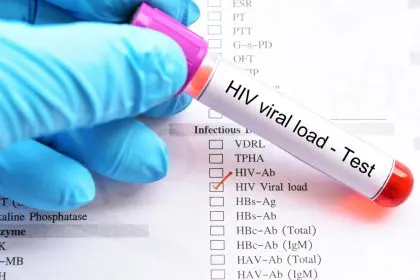A change in mental status represents one of the most significant medical warning signs, often indicating serious underlying conditions that require immediate attention. Unlike many physical symptoms that patients can easily describe, mental status changes frequently go unrecognized by the affected person, making the observations of family members, friends, or caregivers crucial for timely intervention. Understanding the various manifestations, common causes, and appropriate responses to these changes can literally save lives.
Recognizing mental status changes across different presentations
Mental status changes manifest through several distinct but often overlapping presentations that affect a person’s cognitive functioning, behavior, or level of consciousness. Recognizing these patterns helps distinguish normal variations from truly concerning symptoms.
Confusion presents as disorganized thinking and diminished awareness of the environment. Affected individuals may become disoriented to time, place, or person – unable to identify the date, their location, or even recognize familiar people. They often display difficulty following conversations, answering questions appropriately, or remembering recent events. This confusion may develop gradually over hours or days or appear suddenly, with the speed of onset often providing important clues about the underlying cause.
Altered consciousness exists on a spectrum ranging from mild drowsiness to complete unresponsiveness. A person experiencing these changes may become increasingly difficult to arouse from sleep, respond only to vigorous stimulation, or fail to respond even to painful stimuli in severe cases. Changes in sleep-wake patterns often accompany these alterations, with affected individuals either sleeping excessively or experiencing insomnia and agitation.
Unusual behavior manifests as actions or speech markedly different from the person’s normal patterns. Family members often describe these changes as “not acting like themselves.” Specific manifestations include inappropriate emotional responses (laughing during serious situations or crying without apparent reason), suddenly using vulgar language in someone typically reserved, removing clothing in public, or showing uncharacteristic aggression or paranoia. These behavioral changes often fluctuate in severity throughout the day, sometimes worsening in the evening or night – a pattern known as sundowning.
Cognitive dysfunction affects intellectual processes like memory, attention, and reasoning. Affected individuals may suddenly struggle with tasks they previously managed easily, such as handling finances, following a recipe, or navigating familiar routes. They might repeat the same questions despite receiving answers, demonstrate impaired judgment in decisions, or show difficulty concentrating on conversations or activities. These changes often appear subtly at first before becoming more pronounced.
Hallucinations and delusions represent particularly concerning mental status changes. Hallucinations involve perceiving things that aren’t present – seeing people or objects others don’t see, hearing voices or sounds without external sources, or feeling sensations like insects crawling on the skin. Delusions involve fixed false beliefs despite contradictory evidence, such as believing family members are impostors or that someone is trying to harm them. These symptoms frequently indicate serious medical or psychiatric conditions requiring urgent evaluation.
Life-threatening causes requiring immediate medical attention
Certain causes of mental status changes represent true medical emergencies where minutes matter. Recognizing these critical situations allows for appropriate urgency in seeking care.
Stroke occurs when blood flow to part of the brain becomes blocked or when a blood vessel in the brain ruptures. Mental status changes from stroke often develop suddenly and may include confusion, difficulty speaking or understanding speech, personality changes, or altered consciousness. These cognitive symptoms frequently accompany physical signs like facial drooping, arm weakness, or vision changes. Immediate medical attention is crucial, as clot-dissolving treatments must be administered within hours of symptom onset to be effective.
Meningitis and encephalitis, infections of the brain covering and brain tissue respectively, cause inflammation that significantly disrupts normal brain function. Mental status changes from these infections typically develop alongside high fever, severe headache, and neck stiffness – although elderly patients may not develop all these classic symptoms. As these infections can progress rapidly from confusion to coma and even death, immediate antibiotic or antiviral treatment proves essential for survival and reducing long-term neurological damage.
Traumatic brain injury following falls, vehicle accidents, or other head trauma frequently causes mental status changes even when no external injury appears visible. Symptoms may develop immediately after injury or emerge hours later as bleeding or swelling within the skull increases pressure on brain tissue. The person might initially seem normal before becoming increasingly confused, drowsy, or irritable. This lucid interval followed by deterioration represents a particularly dangerous pattern requiring immediate medical evaluation.
Toxic exposure to medications, recreational drugs, alcohol withdrawal, or environmental toxins can dramatically alter mental function. Prescription medications, particularly those affecting the central nervous system, frequently cause confusion when doses are too high or when interactions occur between multiple drugs. Alcohol withdrawal becomes especially dangerous 48-72 hours after the last drink, when confusion, agitation, and hallucinations may progress to life-threatening seizures. Carbon monoxide, heavy metals, and certain industrial chemicals can likewise cause progressive mental status changes that become life-threatening without prompt recognition and treatment.
Severe infections anywhere in the body, not just in the brain, can trigger significant mental status changes – a condition called septic encephalopathy. The body’s inflammatory response to infection affects brain function even when the infection site is distant, such as in the lungs, urinary tract, or skin. Elderly patients often show confusion or altered consciousness as the first and sometimes only sign of serious infection, frequently without typical symptoms like fever. This presentation often leads to delayed diagnosis and treatment unless providers recognize the mental status change as a potential infection marker.
Metabolic and systemic causes of altered mental status
Beyond immediate life-threatening conditions, numerous metabolic disturbances and systemic disorders commonly cause mental status changes through their effects on brain function. These causes often develop more gradually but can still become serious without proper management.
Electrolyte imbalances significantly impact brain function, with sodium, calcium, and glucose abnormalities particularly affecting mental status. Low sodium levels (hyponatremia) frequently cause confusion, lethargy, and even seizures – a common issue in older adults taking certain medications or experiencing prolonged vomiting or diarrhea. Hypoglycemia (low blood sugar) typically triggers confusion, unusual behavior, and eventually loss of consciousness, particularly in diabetic patients taking insulin or certain oral medications. These metabolic disturbances often fluctuate, causing mental status changes that worsen and improve in correlation with laboratory values.
Organ system failure creates profound effects on brain function through various mechanisms. Liver failure allows toxins normally processed by the liver to accumulate in the bloodstream and reach the brain, causing a syndrome called hepatic encephalopathy characterized by personality changes, confusion, and eventually coma. Kidney failure similarly allows waste products to accumulate, affecting mental function through uremic encephalopathy. Advanced heart failure or respiratory failure reduces oxygen delivery to brain tissue, causing gradual cognitive deterioration that may be mistaken for dementia in elderly patients.
Endocrine disorders profoundly affect mental status through hormonal influences on brain function. Thyroid abnormalities in particular cause distinctive mental changes – hyperthyroidism often presents with anxiety, insomnia, and rapid speech, while hypothyroidism typically causes slowed thinking, memory problems, and depression. Adrenal disorders, pituitary dysfunction, and parathyroid abnormalities similarly affect cognition through their impact on hormone balance and electrolyte regulation.
Nutritional deficiencies, particularly of B vitamins, cause progressive mental status changes that may become permanent without timely treatment. Thiamine (vitamin B1) deficiency, common in chronic alcoholism or prolonged malnutrition, causes Wernicke-Korsakoff syndrome with confusion, abnormal eye movements, and severe memory problems. Vitamin B12 deficiency, more common in elderly and vegetarian populations, gradually causes irritability, paranoia, and memory loss that can mimic dementia but potentially reverses with proper supplementation.
Sleep deprivation and severe sleep disorders significantly impact mental status, sometimes creating symptoms that mimic serious neurological conditions. Prolonged sleep deprivation causes progressive cognitive impairment affecting attention, judgment, and emotional regulation. Sleep apnea, where breathing repeatedly stops during sleep, causes chronic nighttime oxygen deprivation that manifests as daytime confusion, irritability, and memory problems often mistaken for dementia or depression in older adults.
Age-specific considerations in mental status changes
Mental status changes manifest differently across age groups, with certain causes predominating in specific life stages and presenting unique diagnostic challenges.
In children, mental status changes often present as behavior quite different from adult manifestations. Rather than showing typical confusion, children may display hyperactivity, irritability, or aggressive behavior during illnesses affecting brain function. Fever alone frequently causes temporary mental status changes in young children, including hallucinations or unusual behaviors that resolve when the temperature normalizes. Developmental considerations complicate assessment, as baseline cognitive and communication abilities vary significantly with age. Parents typically provide the most valuable information about whether behavior represents a concerning change from the child’s normal patterns.
Adolescents present particular challenges when experiencing mental status changes, as mood swings, irritability, and changing sleep patterns often occur normally during this developmental stage. However, sudden personality changes, declining school performance, or unusual thought patterns warrant careful evaluation. Drug and alcohol use frequently cause mental status changes in this age group, while early manifestations of serious psychiatric conditions like schizophrenia or bipolar disorder typically first emerge during adolescence. The challenge involves distinguishing concerning pathological changes from normal developmental turbulence.
Adults in middle age experiencing mental status changes raise different diagnostic considerations. Stress-related conditions, sleep deprivation from work or family demands, medication side effects, and early manifestations of neurological disorders become more common during this life stage. Mental status changes in previously healthy adults without obvious cause warrant comprehensive evaluation, as they may represent the first signs of autoimmune disorders, brain tumors, or early-onset neurodegenerative diseases that benefit from early detection and treatment.
Elderly populations experience the highest incidence of mental status changes, yet these symptoms often receive inadequate attention due to the misconception that confusion naturally accompanies aging. This dangerous assumption leads to missed diagnoses of treatable conditions. Older adults show increased vulnerability to medication effects, develop confusion as a common first symptom of urinary tract infections and other illnesses, and experience more pronounced mental effects from relatively minor physical problems like constipation or mild dehydration. Additionally, sensory impairments (hearing and vision loss) sometimes create apparent confusion when the actual issue involves inability to perceive environmental information properly.
Delirium: The most common acute mental status change
Delirium represents the most frequently encountered form of acute mental status change across healthcare settings, affecting up to 50% of hospitalized elderly patients while often going unrecognized by healthcare providers. Understanding this syndrome proves essential for proper identification and management.
The defining features of delirium include an acute onset, fluctuating course, altered attention, and disorganized thinking. The condition typically develops over hours to days, distinguishing it from the more gradual onset of dementia. Symptoms characteristically fluctuate throughout the day, with periods of greater lucidity often occurring in the morning and deterioration frequently appearing in the evening or night. Attention deficits manifest as inability to focus during conversations, difficulty following instructions, or being easily distracted by irrelevant stimuli. Disorganized thinking appears through rambling speech, illogical flow of ideas, or unpredictable switching between subjects.
Three distinct subtypes of delirium present with markedly different clinical pictures, contributing to frequent misdiagnosis. Hyperactive delirium involves restlessness, agitation, hallucinations, and sometimes combative behavior – the form most easily recognized by caregivers and medical staff. Hypoactive delirium, characterized by lethargy, decreased responsiveness, and withdrawn behavior, frequently goes unrecognized despite being more common, particularly in elderly patients. Mixed delirium alternates between hyperactive and hypoactive states, sometimes shifting multiple times within a single day and creating a confusing clinical picture.
The pathophysiology of delirium involves complex interactions between predisposing vulnerability factors and acute precipitating causes. Vulnerability factors include advanced age, baseline cognitive impairment, multiple chronic medical conditions, sensory impairments, and malnutrition. Common precipitating factors include medications (particularly those with anticholinergic properties), infections, dehydration, electrolyte disturbances, surgery, pain, and sleep deprivation. Often, delirium results from multiple simultaneous factors rather than a single cause, creating diagnostic challenges requiring comprehensive evaluation.
The profound consequences of delirium extend well beyond the immediate confusional period. Delirium independently predicts increased hospital stay length, higher mortality, greater likelihood of subsequent nursing home placement, and elevated risk for developing long-term cognitive impairment or dementia. The condition represents not merely a temporary inconvenience but a serious medical complication with potentially permanent consequences, highlighting the importance of prevention, early recognition, and appropriate management.
Evaluation of mental status changes: The systematic approach
Proper assessment of mental status changes requires a systematic approach combining careful history-taking, physical examination, and targeted testing to identify underlying causes and guide appropriate treatment.
The history collection process must gather information from multiple sources, as affected individuals often cannot provide reliable accounts of their symptoms. Family members, friends, or caregivers should describe exactly how the person’s behavior differs from their normal state, when changes began, whether symptoms fluctuate or progressively worsen, and any associated symptoms like headache, fever, or recent falls. Medication review becomes particularly important, including recent changes in prescriptions, over-the-counter products, supplements, and potential substance use. Establishing an accurate timeline helps distinguish acute changes (suggesting delirium) from gradual cognitive decline (suggesting dementia or other chronic processes).
Physical examination focuses on vital signs and neurological assessment to identify potential causes and severity. Fever suggests infection, while abnormal blood pressure, heart rate, or breathing patterns may indicate metabolic disturbances or organ dysfunction. The neurological examination evaluates pupil responses, eye movements, facial symmetry, limb strength, coordination, and reflexes to identify patterns suggesting specific causes. Assessment for signs of head trauma, neck stiffness, or skin findings that might indicate systemic diseases provides additional diagnostic information.
Cognitive assessment tools provide structured evaluation of mental status changes. The Mini-Mental State Examination, Montreal Cognitive Assessment, or simple screening tools like the Confusion Assessment Method help document specific cognitive deficits and distinguish between delirium and dementia. These assessments evaluate orientation, attention, memory, language processing, and visuospatial abilities, establishing a baseline for monitoring improvement or deterioration with treatment.
Laboratory testing typically includes comprehensive metabolic panels to evaluate electrolytes, kidney and liver function, blood glucose, and complete blood counts to check for infection or anemia. Thyroid function tests, vitamin B12 levels, urinalysis, and toxicology screening help identify specific metabolic or toxic causes. In febrile patients or those with specific neurological findings, blood cultures and lumbar puncture (spinal tap) may be necessary to evaluate for infections affecting the central nervous system.
Imaging studies provide crucial information in mental status evaluation. Computed tomography (CT) scans of the brain can quickly identify stroke, bleeding, tumors, or traumatic injuries requiring immediate intervention. Magnetic resonance imaging (MRI) offers more detailed evaluation of brain structures when the cause remains unclear after initial assessment. In certain cases, electroencephalography (EEG) helps identify seizure activity, including non-convulsive status epilepticus that causes mental status changes without visible seizure movements.
Management principles and treatment approaches
Effective management of mental status changes involves addressing the underlying cause while simultaneously providing supportive care and preventing complications during the recovery period.
The primary treatment principle focuses on identifying and addressing underlying causes rather than simply managing symptoms. For infections, appropriate antibiotics or antiviral medications target the specific pathogen. Metabolic disturbances require correction of electrolyte imbalances, normalization of blood glucose, or management of organ dysfunction. Medication-induced mental status changes typically improve with discontinuation of the offending agent or dose adjustment. Stroke, hemorrhage, or traumatic brain injuries may require surgical intervention, while toxic exposures need specific antidotes when available and supportive care during clearance from the body.
Environmental modifications significantly impact recovery from mental status changes, particularly in hospitalized patients with delirium. Strategies include maintaining a consistent daily routine, ensuring adequate sleep by minimizing nighttime disruptions, providing clear orientation information (visible clocks, calendars, familiar personal items), ensuring glasses and hearing aids remain available and functional, and encouraging family presence to provide reassurance and familiar interaction. These approaches reduce confusion and agitation while accelerating recovery.
Symptom management sometimes requires medication, particularly when severe agitation poses safety risks to the patient or caregivers. However, pharmacologic interventions should be used judiciously, as many medications used to treat agitation can paradoxically worsen confusion or cause other adverse effects, particularly in elderly patients. When necessary, the lowest effective dose of the most appropriate agent should be used for the shortest possible duration, with continuous reassessment of the need for continued treatment.
Preventive strategies for high-risk patients can significantly reduce the incidence of delirium and other acute mental status changes. These approaches include maintaining proper hydration, minimizing use of high-risk medications, ensuring adequate pain control (as untreated pain increases delirium risk), supporting normal sleep-wake cycles, early mobilization after procedures or during illness, and addressing sensory impairments. In hospitalized patients, multicomponent prevention programs have demonstrated significant reduction in delirium incidence and severity.
Rehabilitation and follow-up care remain essential even after the acute condition resolves, as mental status changes often leave lingering cognitive effects. Neuropsychological testing may identify specific cognitive domains requiring targeted rehabilitation. Occupational therapy helps patients relearn daily activities and develop compensatory strategies for any persistent deficits. Regular follow-up ensures continuing recovery and allows early intervention if new problems develop or previous issues recur.
Communication with patients and families during mental status changes
Effective communication with both patients experiencing mental status changes and their concerned family members presents unique challenges that require specific approaches.
When interacting with confused patients, several techniques improve understanding and reduce agitation. Using simple, concrete language with short sentences helps overcome attention deficits and processing difficulties. Approaching slowly from the front, maintaining gentle eye contact, and identifying yourself clearly before each interaction provides reassurance and orientation. Avoiding contradicting false beliefs directly while gently reorienting to reality prevents argumentative interactions that increase distress. Explaining procedures simply before performing them, even if the person seems unaware, shows respect and may reduce resistance during necessary care.
Family education forms a crucial component of managing mental status changes. Loved ones need clear explanation about the cause when identified, the expected course of the condition, treatment approaches, and how they can best support recovery. For delirium in particular, understanding its fluctuating nature helps families make sense of confusing patterns where the person seems normal at times and severely confused at others. Correcting misunderstandings, such as the belief that all confusion indicates permanent dementia, reduces unnecessary distress.
Decision-making capacity assessment becomes necessary when patients with altered mental status face important medical decisions. This evaluation determines whether the person can understand relevant information, appreciate the situation and its consequences, reason about treatment options, and communicate a choice. When capacity is impaired, healthcare teams must identify appropriate surrogate decision-makers while continuing to involve the patient in discussions to the extent possible given their condition. Temporary loss of decision-making capacity during acute mental status changes does not necessarily indicate permanent inability to make decisions once the condition resolves.
Emotional support for families watching a loved one experience mental status changes is essential but often overlooked. Family members frequently describe the experience as frightening and disorienting – seeing someone they know well suddenly behaving like a different person creates profound distress. Acknowledging this emotional impact, providing regular updates on the person’s condition, explaining behaviors as symptoms of medical conditions rather than intentional actions, and involving family in care when appropriate all help reduce anxiety and improve coping during this challenging experience.
Long-term considerations and prognosis
The long-term outlook after mental status changes varies significantly depending on the underlying cause, prompt recognition and treatment, and individual patient factors that influence recovery capacity.
Recovery patterns typically follow one of several trajectories. Complete recovery occurs when mental status returns entirely to baseline after treating the underlying cause, commonly seen in cases of medication effects, simple infections, or metabolic disturbances when addressed promptly. Partial recovery with residual deficits develops when the condition causes some permanent brain changes despite appropriate treatment – often the case after stroke, significant brain infections, or prolonged delirium in elderly patients. Progressive deterioration despite treatment suggests neurodegenerative processes, ongoing brain injury from uncontrolled systemic disease, or conditions without effective treatment options.
Cognitive reserve – the brain’s resilience against damage – significantly influences recovery outcomes. Individuals with higher education levels, intellectually stimulating occupations, rich social networks, and regular mental activities typically show better recovery from mental status changes than those with less cognitive reserve. This phenomenon explains why similar brain insults produce dramatically different functional outcomes in different individuals, with some returning to normal function while others experience permanent impairment.
The recurrence risk for mental status changes varies by underlying cause. Some conditions, once treated, have low recurrence risk (certain infections or medication reactions), while others carry substantial risk for future episodes (seizure disorders, some metabolic conditions, or psychiatric disorders with episodic manifestations). Understanding this risk helps develop appropriate monitoring and prevention strategies tailored to individual circumstances.
Long-term support needs assessment becomes essential after significant mental status changes, particularly in elderly patients. Even after apparent recovery, subtle deficits in executive function, memory, or judgment may persist, affecting ability to manage medications, finances, or household responsibilities independently. Thoughtful evaluation of these capabilities helps determine appropriate support levels, from medication organization systems to more comprehensive care arrangements when necessary.
Prevention strategies for individuals at risk
For individuals with known risk factors for mental status changes, several preventive strategies can significantly reduce episode likelihood and severity when implemented consistently.
Medication management represents a primary prevention strategy for individuals at risk. Regular medication reviews with healthcare providers help identify unnecessary medications or potentially harmful combinations. Using the lowest effective doses, particularly for medications affecting brain function, reduces adverse effect risks. Maintaining an updated medication list including over-the-counter products and supplements helps all providers make informed prescribing decisions that consider the complete medication picture.
Metabolic stability maintenance proves particularly important for conditions where fluctuations trigger mental status changes. For diabetic patients, consistent blood glucose management prevents both hyper- and hypoglycemic episodes that affect brain function. Those with seizure disorders benefit from strict medication adherence and avoiding triggers like sleep deprivation or alcohol. Individuals with liver or kidney disease require careful attention to diet, fluid intake, and medication adjustments to maintain stable function and prevent encephalopathy.
Infection prevention strategies hold special importance for those who develop significant mental status changes with infections. Recommended vaccinations reduce risk for infections frequently causing delirium, including influenza and pneumococcal pneumonia. Good hygiene practices, prompt attention to early infection signs, and appropriate preventive antibiotics when indicated for specific conditions help prevent infections that might trigger mental status changes.
Brain health optimization through lifestyle choices creates resilience against mental status changes from various causes. Regular physical activity improves cerebral blood flow and supports brain metabolism. Nutritionally complete diets rich in antioxidants, omega-3 fatty acids, and adequate B vitamins support optimal brain function. Cognitive stimulation through mental activities, social engagement, and learning new skills builds cognitive reserve that helps maintain function despite challenges. Adequate sleep hygiene practices ensure restorative sleep that supports memory consolidation and toxin clearance.
Early intervention at the first sign of changes significantly improves outcomes across conditions affecting mental status. Family members and caregivers should receive education about early warning signs specific to the individual’s risk factors and clear guidance on when and how to seek medical attention. This preparation allows prompt evaluation and treatment before mental status changes progress to more severe stages with higher complication risks and longer recovery times.
By understanding the significance of mental status changes, recognizing early warning signs, and implementing appropriate preventive strategies, individuals and caregivers can reduce the frequency and severity of these episodes while ensuring prompt treatment when they do occur. This proactive approach significantly improves both short-term outcomes and long-term quality of life for those at risk for these challenging neurological complications.












